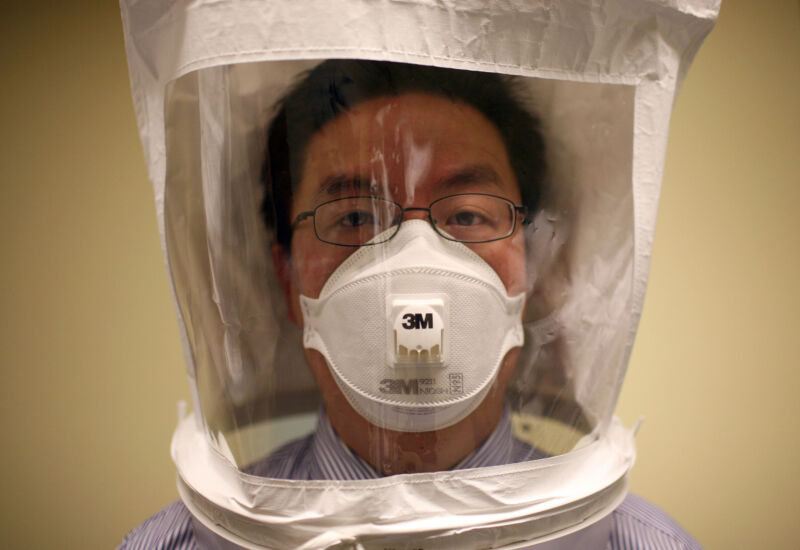Is SARS-CoV-2 airborne? Questions abound—but here’s what we know

Enlarge / A doctor wears a hood as he tests the seal of an N95 respiratory mask during a training at the La Clinica San Antonio Neighborhood Health Center in California. (credit: Getty | Justin Sullivan)
A debate has erupted among researchers over the potential for the pandemic coronavirus, SARS-CoV-2, to spread through the air and-if it does so often enough-what to do about it.
Though talk of airborne transmission has been simmering since the beginning of the pandemic, it reached a boiling point this week following a letter penned by two researchers and addressed to national and international bodies." The letter, eventually signed by 239 researchers, urged those bodies to acknowledge the potential for airborne spread and to recommend control measures aimed at preventing it.
Most public health organizations, including the World Health Organization, do not recognize airborne transmission except for aerosol-generating procedures [AGPs] performed in healthcare settings," the letter stated. The evidence on airborne transmission is admittedly incomplete," the letter went on, but [f]ollowing the precautionary principle, we must address every potentially important pathway to slow the spread of COVID-19."
Read 36 remaining paragraphs | Comments